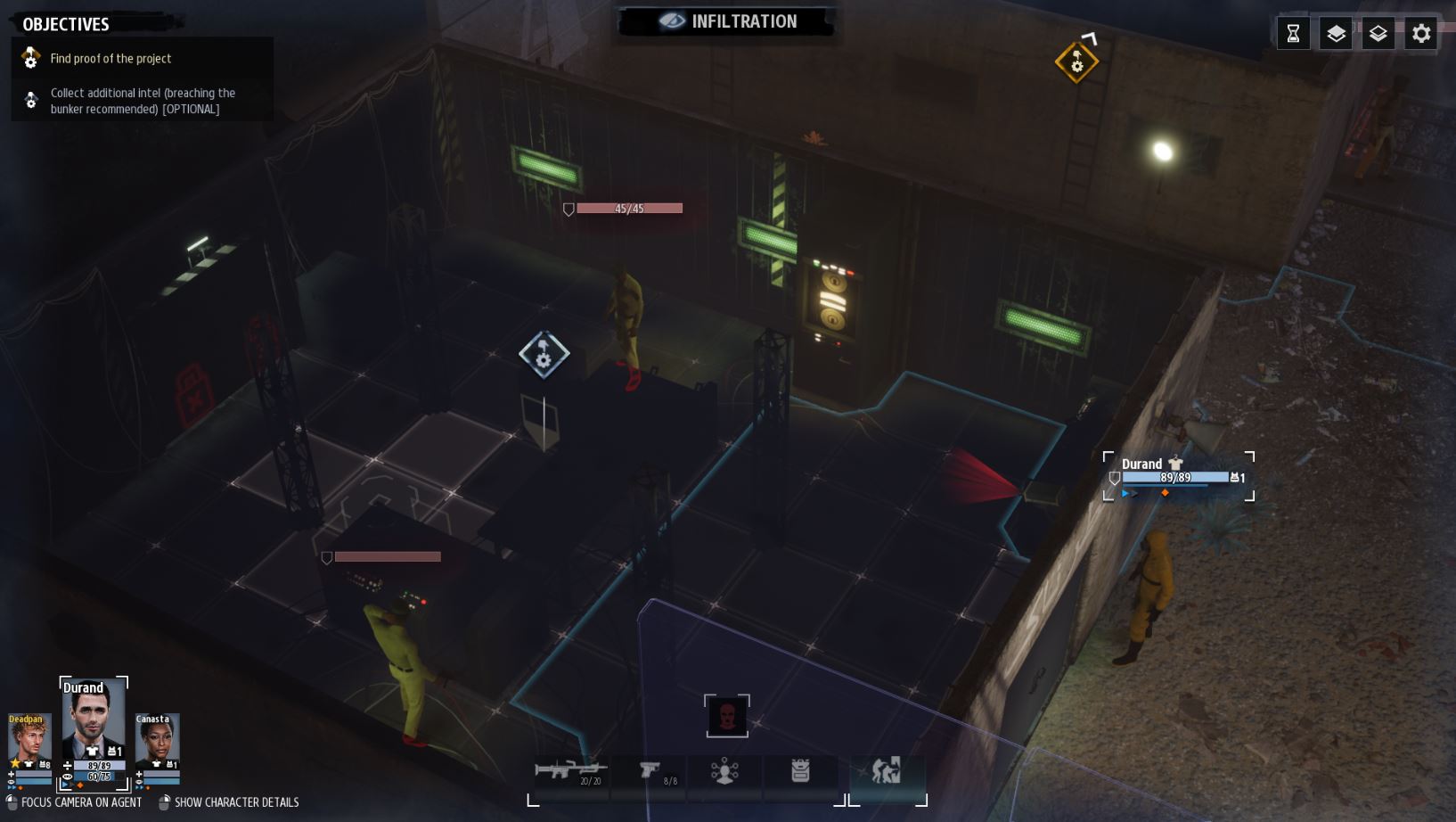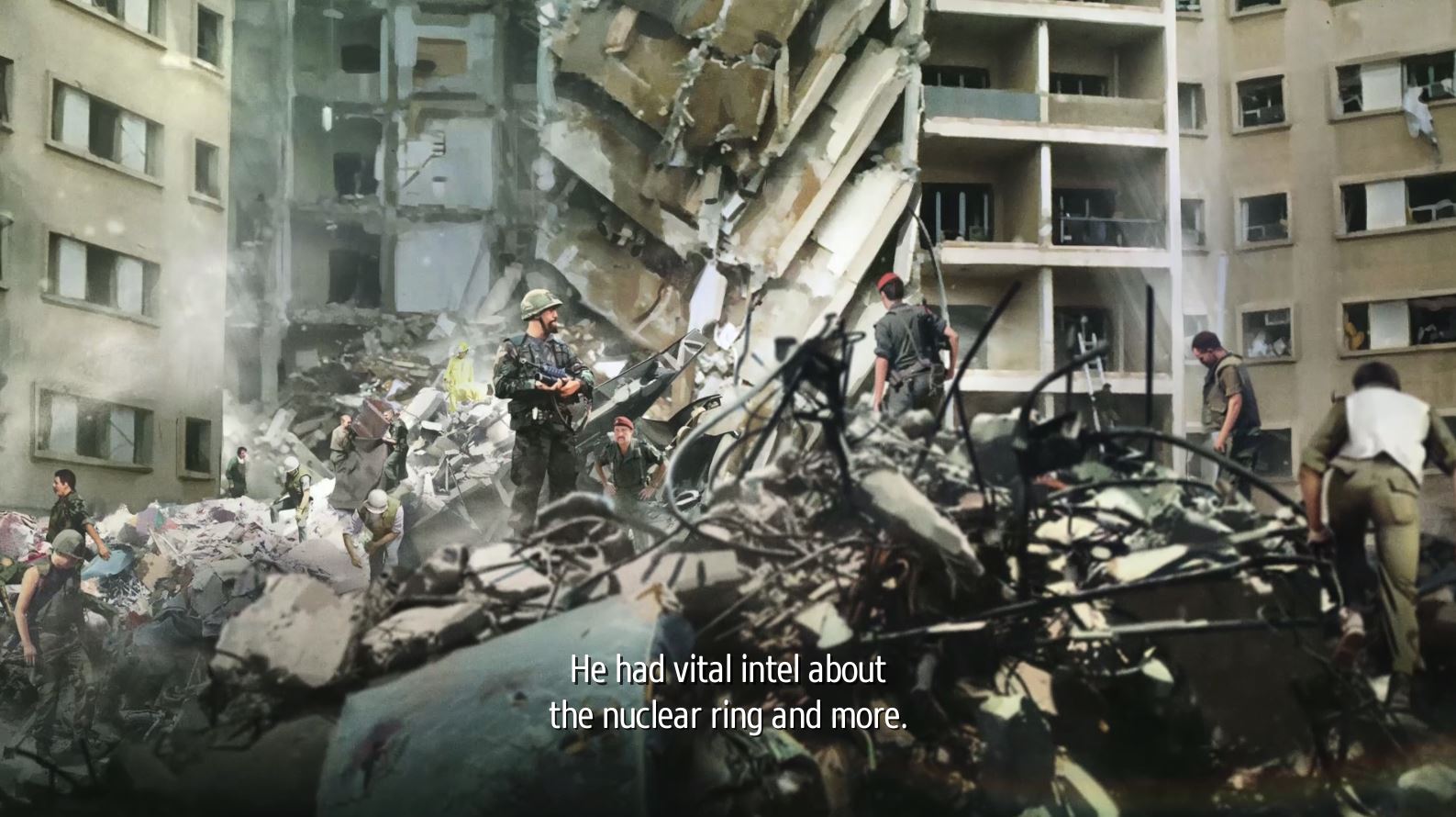Platform:
PC
Released:
August 15, 2018
Publisher:
Good Shepherd Entertainment
Developer:
CreativeForge Games
Phantom Doctrine is a turn-based spy thriller set in an advanced-tech version of 1983 – a fun mix of wacky James Bond adventure and dry John le Carre mystery. It comes to us from CreativeForge Games, the developer of the 2015 strategy Hard West. They’ve left the wild west behind to put their turn-based tactics and asset management mechanics in a new setting: the Cold War.
Playing as either a CIA operative or a KGB counterintelligence agent, you’ll play two sides of the same story to get to the centre of a global conspiracy the scale of which has never before been seen. From your base of operations, you’ll monitor enemy activity, train your agents, and decode the intel you’ve gathered. Then when the iron is hot, you’ll strike: assassinate enemy agents, rescue informants, and steal important documents right from under their noses. All of while (hopefully) keeping yourself safely out of the spotlight.
“The power trip is real here – you control your agents’ skills, bodies, and sometimes even their brains.”
The first thing I want to say about Phantom Doctrine is how great it feels. The graphics are of a good standard of course, but what really stands out here is the effort that went into making me feel the part of a Cold War agent. The corkboard-and-string investigation board was a cute touch and made it fun to connect the dots, and the map made me feel like I was spying on the whole world.
The power trip is real here – you control your agents’ skills, bodies, and sometimes even their brains. This world of spies isn’t restrained by real-world technology! Body modification and brainwashing are common tools to tip the scales of balance, and can be used for or against you.
Tactical Missions are where the real strategy comes in, separated by an Infiltration phase and a Combat phase. Infiltration lasts for as long as your enemy agents remain undetected, or until the alarm is raised. This is the fun stealth part, but it gets kinda silly as you can break down glass doors right in front of people without drawing attention. The opposition’s cone of sight is laughably small and rigid. You can take out an agent one square away from another’s sight and they won’t see you at all. It makes sense gameplay-wise, but breaks a lot of the sense of urgency and danger. I had fun with it though, laughing as I took down an entire room of agents by staying juuuust out of their vision.
You can only stealthily take down so many enemies before the cell leader realises something’s up, and at that point combat is pretty much imminent. This was slightly annoying as I got the most satisfaction out of evacuating my team without ever getting noticed, and combat takes a long time. Missions that want you to to take out all enemy agents are a huge pain, as the ‘fog of war’ hides them from you completely and wastes your time until reinforcements arrive. A few abilities make these maps interesting: agents have a good mix of abilities that make combat varied, and equipping them well beforehand is key. It’s at its best when I can keep them at bay until our evac arrives. It’s at its worst when you’ve gotta clear out the entire map with just your cell of five.
On the whole, tactical missions just run a little too long for my liking. The Enemy phase takes a while, and enemy reinforcements just elongate the game. I loved sneaking around and stealing loot and secret documents, and would have much preferred it if I could have done it the whole time. That being said, it kept me glued to the screen in suspense to see what would happen next. Just… one… more… turn!
While at your hideout, you have a huge amount of control over your operation and your agents. Suspicious activity can pop up anywhere on the map and you only have so many agents, so there’s some real management involved in spreading your assets out. The more active you are, the more your agents are exposed to danger. Some risks can pay off, but others can land you in real hot water, perhaps even forcing you to move your whole hideout just to avoid detection. Once you’ve got your global strategy down pat though, it’s an incredibly satisfying feeling.
Your decisions can make or break you: Agents sometimes screw up, and when they do you can be forced to make some tough calls to save your operation. At one point I was faced with the decision of trusting an agent who might turn out to be my enemy or execute her to be safe. I chose to trust that she was loyal because she was my favourite unit, and so it was extra satisfying when I received an extra ability for her when it turned out I was correct. On another occasion, my trust earned me nothing but the urgent need to relocate my hideout to another country. These events and outcomes aren’t fixed, either: everyone’s play-through will be a little different.

To ‘decode’ the secret files you’ve so carefully stolen, you’ll need to visit the analysis cork board. I mentioned before that it’s cute, and it certainly is fun to move the files around at will and connect them with string. But it hardly inspires any actual clue solving. A minigame involving finding keywords in documents quickly devolves into clicking at any relevant-looking words, then playing a matching game with other words around the board. No analysis board left me with any understanding of how I was getting from point A to point B, and many documents didn’t even allow me to inspect it closely. It was a shame I couldn’t be more involved in decoding, but it’s pretty cool to move strings around.
Phantom Doctrine does offer a game mode that promises a more in-depth story, but it’s locked off, presumably until you finish the campaign at least once. I’m not sure what the point of gating off the proper story is, but I’d much rather have played the full experience from the start.
I found myself relying on save-scumming more than I’d care to admit – the act of constantly reloading to an earlier turn until things turn out your way. The vast majority of this was my own fault – years of playing Fire Emblem has conditioned me never to lose a unit. However, there were several instances where I reloaded a save because certain game mechanics weren’t explained very well. The in-game tutorials are brief and don’t go into much detail, leaving me to guess about the particulars. How likely is a soldier to see through my agent’s disguise? Will the sound of breaking glass alert people nearby? I eventually figured out the answers myself, but seeing as how this game is full of easily forgettable details an in-depth tutorial menu would have erased a lot of my problematic episodes with Phantom Doctrine.
Positive:
- Stealth mechanics are fun
- A micro-manager's dream
- Good campaign length
- Really makes you feel like a spy
Negative:
- Combat mechanics could be better
- Little actual mystery solving
- No accessible tutorial
Phantom Doctrine is a game that’s going to keep me busy for hours on end. It’s hard without being unfair, and the campaign is as long as you want it to be – if you’re thorough, it’ll take you way beyond the 40 hours the game estimates. If you don’t mind missing details, it might be a little shorter. Though the mystery solving could have been a little more involved, the hideout management was great. And though the combat could have been smoother, I had more fun than hard times.












